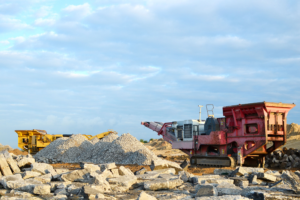FireFly Wins Green Light in Canada: Is VRB Project Now a Breakthrough?

When a junior miner clears a major regulatory hurdle, markets take notice. That is exactly what happened when FireFly Metals (ASX: FFM) secured the long-awaited Green Bay environmental permit for its flagship Canada copper-gold project in Newfoundland. This is more than just paperwork; it represents a genuine de-risking milestone. Approvals of this nature can take years and are often where projects stall. For FireFly, the decision signals regulatory confidence in the project’s merits and its alignment with Canada’s strategic push into critical minerals. Investors responded positively, with FireFly shares recording a modest uptick on the news, reflecting market optimism. The key question is whether this step propels Green Bay from a promising exploration story into a genuine development breakthrough.
What are the Best ASX stocks to invest in right now?
Check our buy/sell tips
Company Snapshot
FireFly is not an unknown name in the world of ASX copper-gold explorers. Listed on the Australian Securities Exchange, it has increasingly positioned itself as a developer rather than just a prospector. Its crown jewel is the Green Bay project, located in Newfoundland’s Baie Verte district, a region long regarded as one of Canada’s friendliest mining jurisdictions. The project encompasses the historic Ming Underground Mine and nearby deposits such as the Little Deer Complex, both of which have a legacy of copper production. This gives FireFly a head start compared to greenfield peers. While still in the early stages of development, the company’s exploration history has consistently confirmed high-grade mineralisation, strengthening investor belief that Green Bay can grow into a meaningful copper-gold operation. FireFly’s strategic shift from aggressive exploration to disciplined project building is now becoming clearer.
Why the Approval Matters
For any mining company, securing environmental approval is often the most significant roadblock between exploration and actual development. The newly granted FFM Green Bay approval clears the path for feasibility studies, engineering design, and eventual financing discussions. Without it, no amount of drilling results or resource estimates could translate into production. From a Canadian regulatory perspective, this approval also reflects government alignment with projects that can contribute to the country’s critical minerals strategy, which emphasises copper as a key enabler of electrification and green infrastructure. For FireFly, it means its project is officially recognised as viable within strict environmental and community guidelines. Investors should note that this reduces uncertainty and sets the stage for more advanced studies. It is not hyperbole to say this could be the most important milestone in the company’s history to date.
The Green Bay Project
The FireFly Canada copper gold project is increasingly standing out as one of the more advanced development stories in the junior mining space. Green Bay’s current resource sits at an impressive 24.4 million tonnes in the Measured and Indicated category, grading 1.9% copper equivalent, with a further 34.5 million tonnes in the Inferred category grading 2.0% copper equivalent. These numbers put it on the radar of institutional investors looking for leverage to copper’s bullish supply-demand dynamics. Beyond the raw resource figures, the project’s location provides meaningful advantages. It is close to deep-water ports, existing power infrastructure, and skilled local labour, all of which help reduce development costs. The Ming Mine already boasts declines and shafts that can be refurbished, while proximity to the Nugget Pond mill creates potential for processing synergies. Metallurgical results have also been encouraging, with recoveries above 98% for copper and strong performance for gold and silver using conventional, low-cost methods. Taken together, Green Bay has both grade and infrastructure, a rare combination in junior development projects.
Market & Investor Impact
The environmental permit was widely interpreted as a material de-risking event for FireFly. On the day of the announcement, shares recorded a modest uptick accompanied by increased trading volumes, reflecting renewed market attention. For many investors, the approval signals that Green Bay is no longer just an exploration play but a project with a clearer pathway toward development.
Market commentary has become more constructive, with analysts and industry observers noting that FireFly’s resource base, high metallurgical recoveries, and favourable location in a mining-friendly Canadian district set it apart from many junior peers. Importantly, the approval positions the company to advance into detailed studies and financing discussions, steps that are often decisive for attracting institutional investors. In comparison to ASX copper-gold peers such as Sandfire Resources (ASX: SFR) and Hot Chili (ASX: HCH), FireFly’s current market capitalisation remains modest relative to its resource quality. If the company can continue to deliver on its milestones, the Green Bay approval could mark the start of a stronger investor re-rating cycle.
Risks and Next Steps
Despite the progress, Green Bay is still in the early stages of development and carries considerable risk. The most pressing challenge will be financing. While FireFly has already raised around A$145 million, construction capital expenditure is likely to run into the hundreds of millions, meaning additional equity or debt funding will be required. This will expose the company to dilution or debt servicing risks. Another key uncertainty is commodity price volatility. Copper has strong long-term demand fundamentals due to electrification and renewable energy build-outs, but it remains a cyclical metal prone to sharp corrections. Timing of development relative to the commodity cycle will be critical. Execution risk is also material: FireFly must now deliver a scoping study, followed by feasibility work, offtake agreements, and construction approvals. Investors should track these milestones carefully, as each will either confirm or challenge the project’s trajectory.
Investor Takeaway
The Green Bay environmental permit represents FireFly’s transition from being another name among ASX copper-gold explorers to becoming a genuine development candidate. It is a classic case of optionality: investors are now holding exposure to a project that could become a significant Canadian copper producer just as global demand accelerates. At the same time, execution risks remain, particularly around financing and project delivery. For investors, the approval offers speculative leverage to copper’s structural growth story and provides a potential re-rating catalyst if FireFly successfully advances through feasibility and funding. The market has so far responded positively, but the real test will come with the company’s ability to execute on time and within budget. FireFly’s Green Bay project is no longer just an exploration story; it is now firmly on the development radar, and that could be a breakthrough moment worth watching.
FAQs
- What is FireFly Metals’ main project?
FireFly Metals’ flagship asset is the Green Bay copper-gold project in Newfoundland, Canada. It includes the historically producing Ming Mine and surrounding deposits, making it one of the more advanced development projects among ASX copper gold explorers.
- Why is the Green Bay environmental permit important?
The FFM Green Bay approval removes one of the biggest barriers to development. Without environmental clearance, the project could not advance to feasibility studies or construction planning. It de-risks the pathway to production.
- What are the next steps for FireFly Metals?
The company will focus on delivering a scoping study in early 2026, followed by feasibility work, securing offtake agreements, and arranging construction financing. Each step will be critical for maintaining investor confidence.
- What risks remain for the project?
Key risks include the large capital required to build the project, potential delays in permitting or feasibility, and copper price volatility, which can significantly affect project economics.
- How does Green Bay compare with other ASX copper-gold explorers?
Peers like Sandfire Resources and Hot Chili have larger market capitalisations, but FireFly’s advantage lies in high-grade resources, strong infrastructure access, and a favourable Canadian mining jurisdiction.
Blog Categories
Get Our Top 5 ASX Stocks for FY26
Recent Posts
Develop Global Wins $200m OceanaGold Contract- What It Means for Investors
Develop Global (ASX: DVP) climbed 4% to A$4.36 on Friday after securing a A$200 million underground development contract with global…
Nova Minerals Drops 14% on $20m Capital Raise- Buy or Avoid?
Nova Minerals (ASX: NVA) dropped nearly 14 per cent to A$0.90 following the announcement of a US$20 million (approximately AUD…
WiseTech (ASX:WTC) Rises After Richard White Cleared of Misconduct – Should You Buy the Dip?
WiseTech Global (ASX: WTC) climbed 3 per cent to A$70.18 on Friday after founder and Executive Chairman Richard White was…



